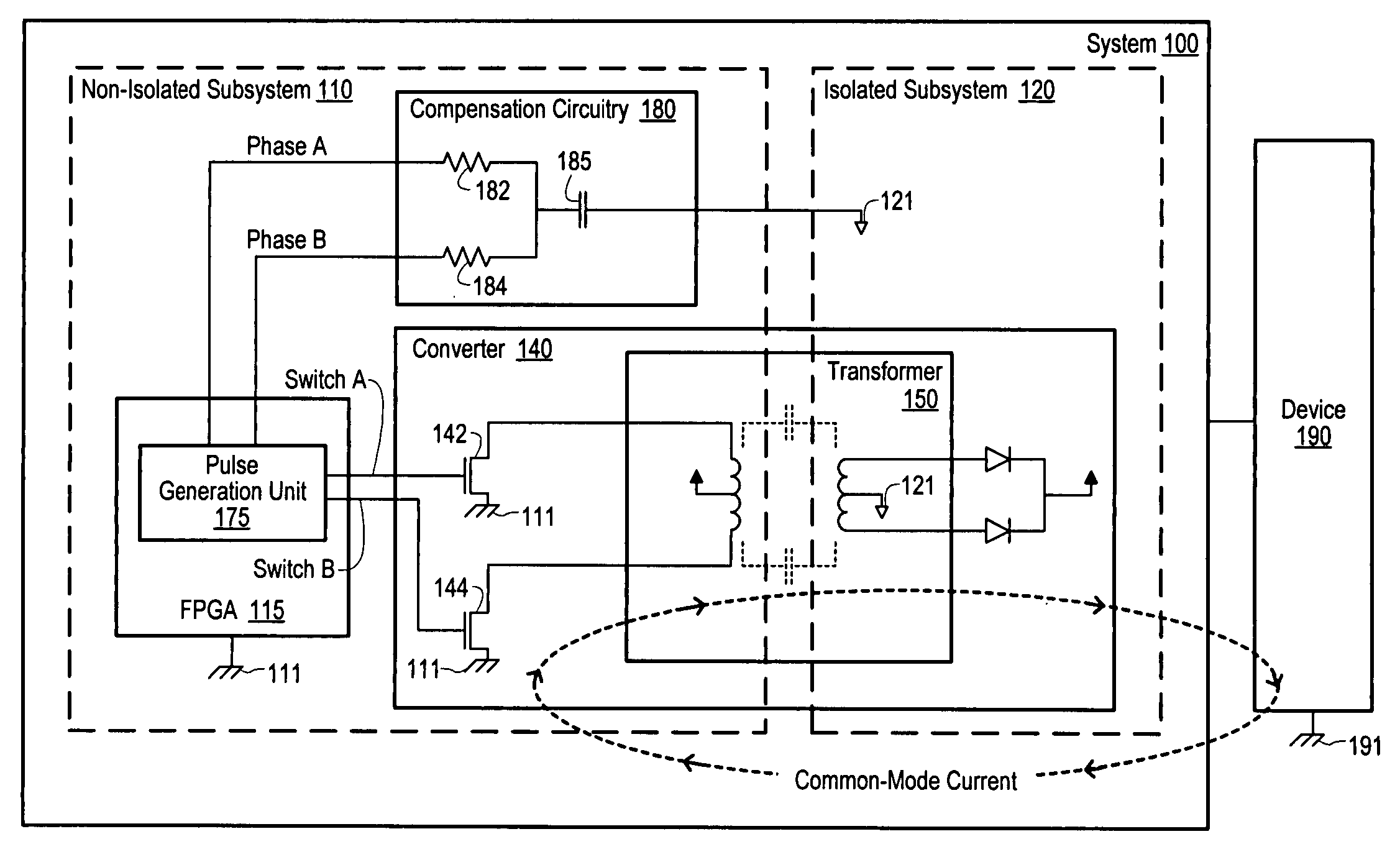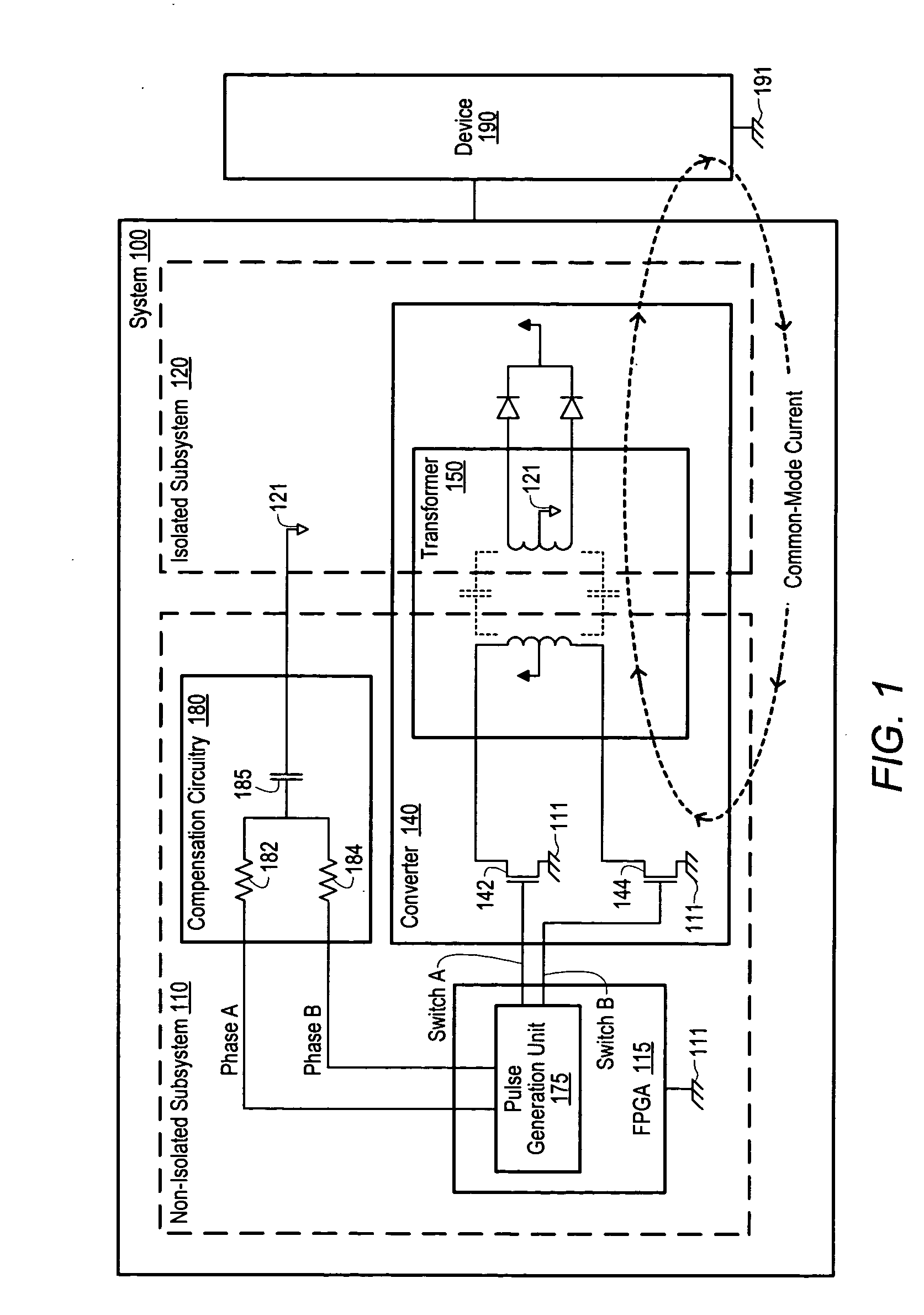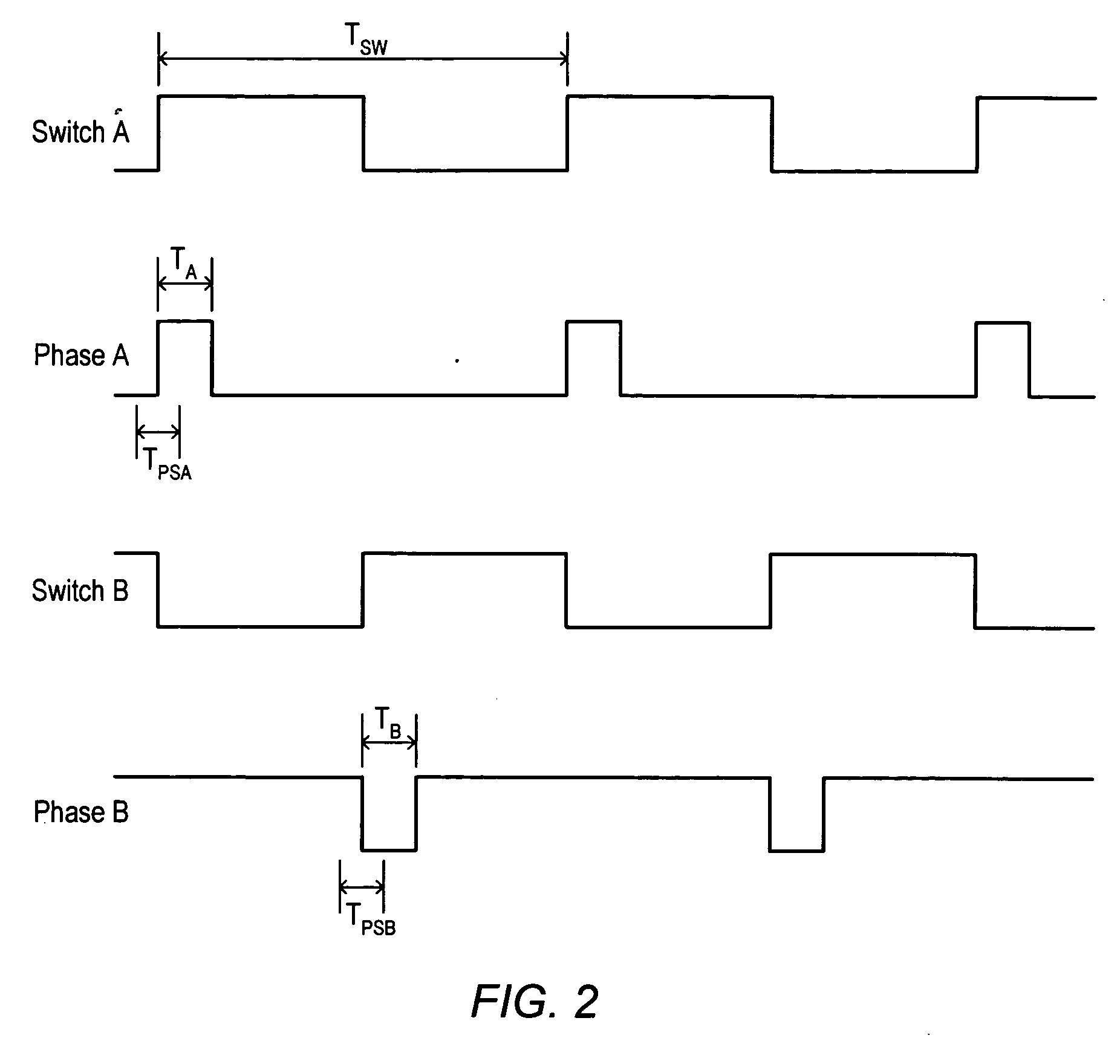Common-mode current cancellation with digital pulses for isolated applications
- Summary
- Abstract
- Description
- Claims
- Application Information
AI Technical Summary
Benefits of technology
Problems solved by technology
Method used
Image
Examples
Embodiment Construction
[0017]FIG. 1 is a diagram of one embodiment of a system 100 including a mechanism for reducing common-mode current in an isolated subsystem 120. As illustrated, the system 100 includes a non-isolated subsystem 110 and an isolated subsystem 120. During operation, a common-mode current may flow from non-isolated subsystem 110 to isolated subsystem 120. In one embodiment, circuitry within non-isolated subsystem 110 provides a first and a second pulse to a compensation circuit to generate a cancellation signal. The cancellation signal is injected into the isolated ground of the isolated subsystem 120 to reduce the common-mode current received at isolated subsystem 120.
[0018] System 100 may be a card or board plugged into one of the I / O slots of a computer system (see FIG. 5), or a card or board plugged into a chassis. System 100 may also be any of various types of computing or processing systems, including a personal computer system (PC), mainframe computer system, server system includ...
PUM
 Login to View More
Login to View More Abstract
Description
Claims
Application Information
 Login to View More
Login to View More - R&D
- Intellectual Property
- Life Sciences
- Materials
- Tech Scout
- Unparalleled Data Quality
- Higher Quality Content
- 60% Fewer Hallucinations
Browse by: Latest US Patents, China's latest patents, Technical Efficacy Thesaurus, Application Domain, Technology Topic, Popular Technical Reports.
© 2025 PatSnap. All rights reserved.Legal|Privacy policy|Modern Slavery Act Transparency Statement|Sitemap|About US| Contact US: help@patsnap.com



